Exploring Valletta Underground
Are you ready to explore another world that’s hiding below the busy streets of the capital? The tour of Valletta Underground has been definitely one of the most sought after tours in Valletta in the past few months.
Since November 2021 the visit to our capital city can be enhanced by experiencing Underground Valletta, which sheds light on the different uses of the passageways beneath Valletta along the centuries. At the same time it enables visitors to admire the marvelous engineering entailed in the construction of this city.
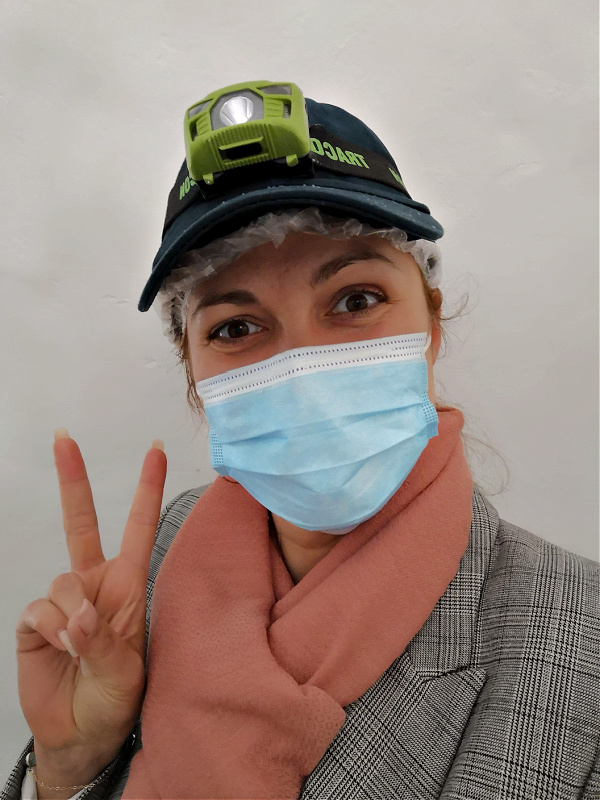
Now, Valletta Underground being accessible to the public, the capital city cannot be fully appreciated without experiencing that which lies beneath it.
And even I finally got the chance to explore it. The tour starts at the Museum of Archeology. The group gets together and is provided with hard hats and a head light. Be prepared it’s pitch dark down there.

The actual tour of Valletta Underground starts right on the corner of Saint John’s Street / San Gwann and the Merchants Street. The entrance to the underground is beautifully marked and relatively easy to find.

We will be exploring the underground just below Merchant street, Santa Lucija street and come up at the Republic Street right in front of the law courts. This is basically a small teaser of the extensive underground system that’s hiding away under the busy streets of the capital city.
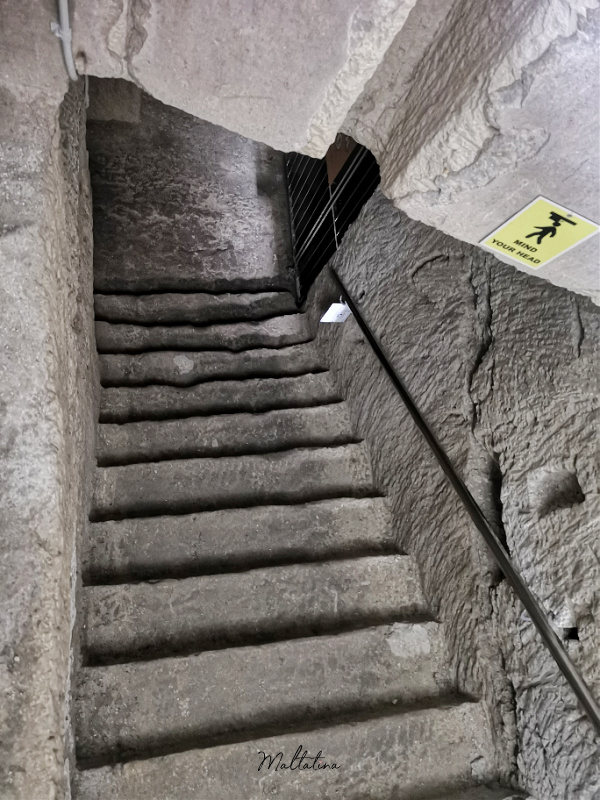
How did it all start? When the Knights of St. John arrived in Malta in 1530 and settled in Birgu, Valletta didn’t exist just yet. It was just the Sciberras peninsula. When the Great Siege of Malta ended in September 1565 the Knights of St. John received a lot of prestige and funds from Europe. They used them to built the fortified city of Valletta.
Pope Pius V sent his military architect, Francesco Laparelli, to design the new city, while Philip II of Spain sent substantial monetary aid. The foundation stone of the city was laid by Grand Master de Valette on 28 March 1566. Laparelli’s assistant was the Maltese architect Girolamo Cassar, who later oversaw the construction of the city himself after Laparelli’s death in 1570.
For Valletta to be a truly well-fortified city they need to have a good underground system. And we will be seeing part of it today starting with a cistern.
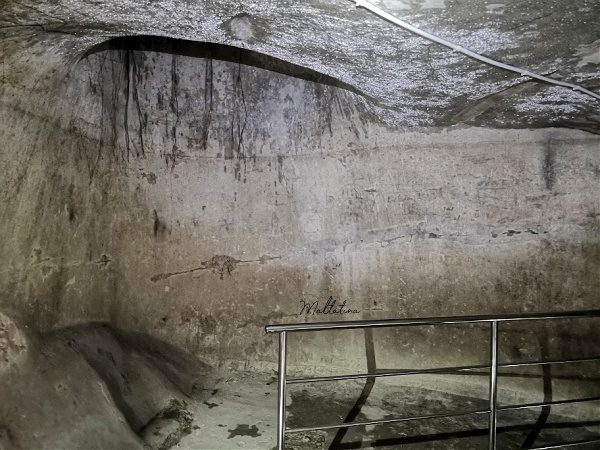
For Valletta to function well it needed a good underground system. This was needed for multiple reasons, the first one was enough storage for grain. It had to have tunnels linking between palazzos and other buildings in Valletta.
The two most important ones were water and sewage. In case of a siege people living in Valletta needed to have a good supply of fresh water. Every single house built in Valletta had to have a place to store rain water and a place for foul water. Every house had to be also connected to the public sewer.
This is one of many cisterns in Valletta. When you here, look around on the walls. You can tell from all the kind of drawings that there were people staying here and trying to use their time. The next stop is in yet another cistern, but this time much larger.
Apart from the private wells in each dwelling, public cisterns were a top priority for the building of Valletta. By 1566 many had been excavated and full of water. The water collected from rooftops was the only supply to the city until the aqueduct, bringing fresh water from the countryside, was completed by 1615. However the aqueduct could not be relied on during a siege due to sabotage.
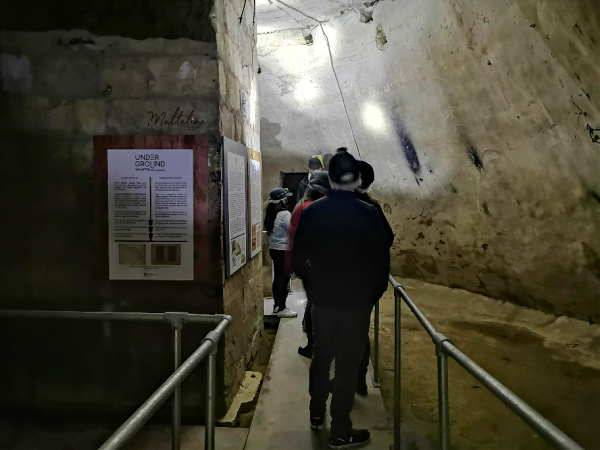
Every house also had to have a specific underground chamber to receive human wastes. This chamber was connected through an inclined conduit to a main sewer beneath the street. The system was completely gravity-fed.
Such an avant-garde sanitary system was the envy of many European cities. However, as the population of the city soared, it proved inconvenient. The preciousness of fresh water meant that little was used to flush sewer and years of accumulation resulted in blockage.
The arrival of fresh water in Valletta in the 17th century improved the situation, however smells rising into the building made their lower quarters uninhabitable. The waste which reached the edge of the city simply poured out into the harbors, which were badly contaminated.
It was only in the 1780s that street drains and public sewers were refurbished, only to be overhauled in the 19th century since the system had become unsustainable. A flushing system was introduced through a system of tunnels beneath each street, which still made partial use of the 16th century rock-hewn conduits. The new system was completed in 1885 and is still mostly in use today.
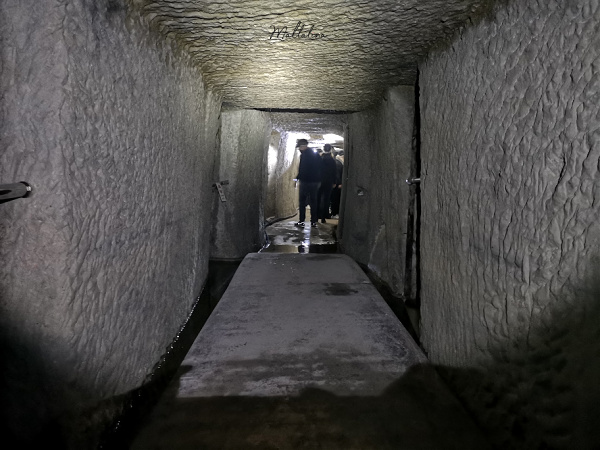

In some of the underground rooms, carved crosses and saints are still visible on the walls, while some shelter rooms are decorated with colourful Maltese patterned tiles salvaged from bombed houses in the city.
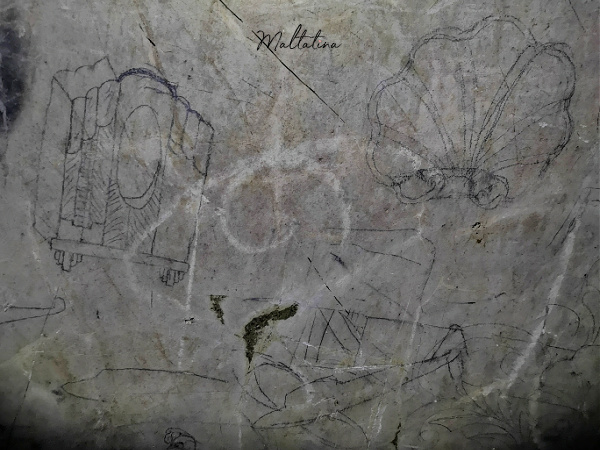

As you can image a lot of stone was recovered during digging of wells and that was used for building purposes.

During the Second World War, the last important chapter for subterranean Valletta unfolded with the increase of its tunnels and their use as shelters. Thousands spent nights crammed down there, deprived of decent sanitary facilities and sufficient food supplies, spurred on by the hope that another raid raid would soon be over and that they would manage to get out safe and sound.

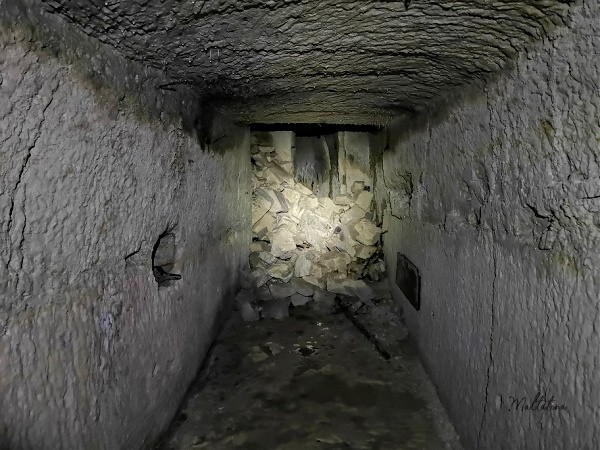
Now it’s time to enter arguably the most interesting part of the tour. It looks like an underground church. This vault is about two stories high located below Republic Street where is the Great Siege monument. Reservoirs such as this would hold millions and millions of liters of water. It is one of many reservoirs found in Valletta.
In 1723 Valletta had around 33 public reservoirs, six cisterns in Fort St Elmo, and 1637 private cisterns.

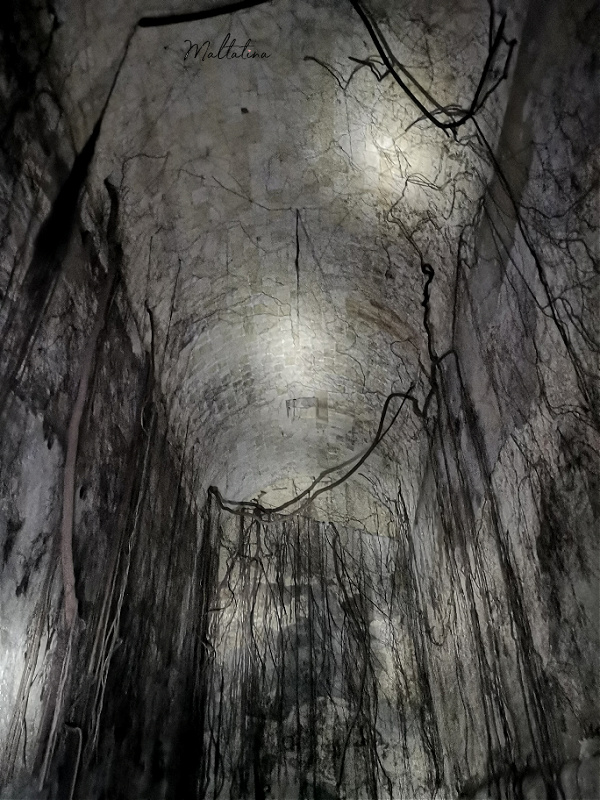
This is another large reservoir and our last stop of this tour. The architecture is quite exquisite considering is hidden underground.

I hope you really enjoyed this tour and learnt something new and exciting. The tours take place on Mondays, Wednesdays and Sundays and the tickets can be purchased here.
To make this photo blog complete, here is a map and I’m tagging the National Museum of Archeology where the tour starts and where you can also purchase your tickets.



